
David Pickford explains why, in his view, social media is detrimental to both the climbing community and our enjoyment of the sport.
When the 18th Century English philosopher and social theorist Jeremy Bentham devised an innovative layout for an institutional building - which he called the Panopticon - he could hardly have imagined that a couple of centuries later billions of people would be living under the same system of control, constant observation, and subtle coercion that his design enabled. Bentham's Panopticon allowed a single watchman to observe all the inmates of the building at once, without the inmates knowing whether or not they were being watched. The social innovation of Bentham's design is that the inmates are compelled to modify their behaviour because they must act as if they are being watched at all times.
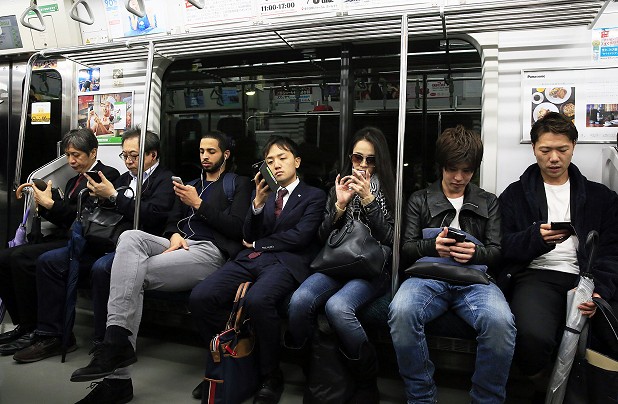
The social media information stream quickly becomes something other than what it claims to be; it becomes about marketing a personality, a brand, or a product rather than a source of information about the activity itself. It becomes direct digital advertising dressed up and disguised as climbing media.
Jeremy Bentham's Panopticon, I'd suggest, is a perfect representation of the fundamental architecture of social media. These platforms and their associated technologies, which have spread throughout the world with such unprecedented speed over the past decade, have impacted climbing and mountaineering profoundly. It is worth pointing out here that no other technology, in the whole of human history, has been adopted by so many, so quickly, on such a global scale.
The aim of this essay is not to analyse the use of social media or its effects, as such, in the context of climbing. This has already been done by others with far greater expertise in the subject. Instead, I hope to identify some the reasons why, for many people, it may be hugely beneficial to move away from social media entirely.
For the purposes of full disclosure, I should make it clear that I'm among the minority who have used social media - albeit on an occasional, phlegmatic basis - and then made a conscious decision to finally expunge these platforms from my life a couple of years ago. My core reasons for doing so are best summarised by Chamath Palihapitiya, the former vice president of user growth at Facebook, who recently said: "[Social media] is eroding the core foundation of how people behave by and between each other. My solution is I just don't use these tools anymore."
Clearly many of the well-publicised problems with social media are also representative of some of the core structural failures of Facebook itself as a company, its complete lack of corporate governance and its leadership by a single individual who appears to possess a vision of human interaction so deeply sociopathic that it represents, insofar as it is a vision at all, a dystopia on an unimaginable scale. In the two key works of twentieth Century dystopian fiction - Aldous Huxley's Brave New World and George Orwell's 1984 - the terrible future realms imagined by these authors still hold the dangerous possibility of private conversations between individuals. In Mark Zuckerberg's future realm, private conversations would simply cease to exist altogether. At such a time, if it ever does come to pass, the final-stage evolution of Jeremy Bentham's Panopticon - powered by all the tools at the disposal of some of the world's wealthiest corporations - would be complete. It is worth noting here that the Chinese government has already developed a full scale, comprehensively functional digital version of Bentham's Panopticon within China - the so-called 'social credit' system - that constantly monitors the actions, interactions, and behaviour of Chinese citizens. China, in this sense, is a stark warning to the rest of the world about the implications of social media technologies when they are controlled by an all-powerful agency.
Returning to Facebook - the company that dominates social media in most countries outside China - it's worth highlighting just a few key issues, among numerous others, that illustrate the extent of the contempt for humanity at large within Zuckerberg's firm: such issues include the facilitation of the ethnic cleansing of Rohingya Muslims in Myanmar; the algorithmically generated promotion of extreme content that's now widely acknowledged as highly corrosive to functional democracy; the viral spread of lunatic conspiracy theories; the complete disregard for the well-being of young people shown by the extent of abuse and cyber-bullying on social platforms. Very recently, a Malaysian teenager took her own life after asking her Instagram followers whether she should live or die. When 69% responded with the latter, she chose death. In the wake of this tragic incident, it's worth remembering that, as with many others like it, this event was a direct result of a particular corporation's digital products, and of the policies (or lack thereof) that control the way those products can be used. This latter case reminds me of the following powerful statement (which I believe can be read as a veiled reference to the damaging effects of social media) in Barry Lopez' recent memoir, Horizon: "In which Western nations does a determination to address the mental, spiritual, and physical health of children override and indifference towards their fate? Or are these questions now thought of as anachronistic, no longer relevant to our situation?"
After considering all this, do you still like Facebook? Do you still want to use its supposedly 'free' products and services? If you still believe, or would like to believe, that social platforms might be a force for good as well as evil, I cannot recommend Shoshana Zuboff's recent book The Age of Surveillance Capitalism: The Fight for a Human Future at the New Frontier of Power more highly. In it, Zuboff forensically deconstructs the real commercial architecture and corporate strategies that Facebook and Google have used to dominate the digital world, showing how these companies have attempted, and in numerous ways succeeded, in re-engineering human behaviour for vast profit. It is not an exaggeration to say that Zuboff's book finally proves how these firms have successfully re-wired the brains of the users of their 'free' products and services in order to package and sell their behavioural data in the digital advertising marketplace.
Taking the debate about whether we should use social media at all from the global and back to the local, it's worth examining what's happened to climbing and mountaineering reportage due to the widespread use of social media by leading climbers. Specifically, it's worth looking at Instagram's impact on the way significant climbs are now reported, and whether or not this process is a good thing for climbing and adventure sports in general, and also for climbers and adventurers as individuals.
As quickly becomes obvious when scrolling through the Instagram page of any social media savvy climber operating at a high level, the use of social platforms by sponsored athletes has reached fever pitch. Brands see the value in social media primarily because it represents a tantalising - and minutely measurable - form of direct advertising; a way of putting powerful marketing information in front of consumers without the need to go through an intermediary platform. This means sponsorship contracts frequently have clauses demanding that athletes post a certain number of times per month, and in some cases a certain number of times per week. The impact of this process on the quality of public information about climbing and mountaineering is profound. As a result, the kind of information that's disseminated via social media by some of the climbing world's leading practitioners is frequently loaded with marketing messaging. These messages can take the form of product placement or general brand endorsement, or anything in between. Yet regardless of the message, the result is often the same. The social media information stream quickly becomes something other than what it claims to be; it becomes about marketing a personality, a brand, or a product rather than a source of information about the activity itself. It becomes direct digital advertising dressed up and disguised as climbing media. This is not, I would argue, a positive trend.
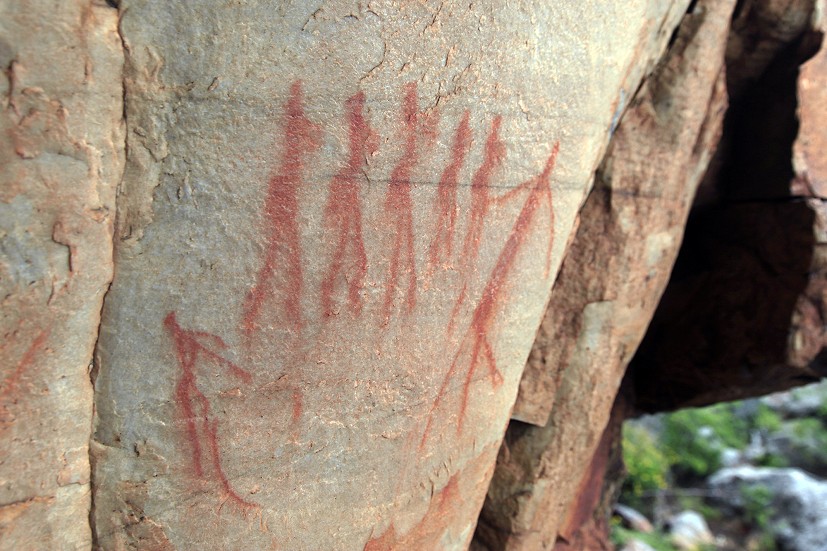
This movement towards direct digital advertising via Instagram is as understandable, in one sense, as it is unfortunate. In certain cases it creates climbing or adventure sports-focused social media pages that are extreme forms of self-parody. Rather than highlighting any of these specifically, the American climbing writer Peter Beal's brilliant pastiche 'We Are So Good' on his Mountains and Water blog channels the multi-layered absurdities of the so-called 'social media professionals' of the adventure sports world:
"The news on social media is that we are all so good… It's cool, an honour, humbling even, to be this good. Our selfie game is top-notch. We are Instagram-ready, always. Our brand is building momentum. Our Kickstarter is kicking butt, albeit in a friendly, kicky way. Our plane ticket to paradise has been bought, punched and posted up. We still do Facebook. Of course we do. Curating a life across multiple platforms in a disarming, pleasantly aggressive way takes time. But we're grateful. Really grateful. We've learned a lot in the process and we are always hungry for more. We are so good."
Beal's hilarious piece, which is well worth reading in full, shows how those with an interest in self-promotion of whatever kind will always turn to social media as a defacto means of creating publicity. And why wouldn't they? It's the easiest way to achieve publicity, if publicity is what you want. And herein lies a crucial problem.
Outdoor climbing and mountaineering - like almost all other adventure sports - are self-organised. And self-organised activities are by their very nature unregulated, in diametric contrast to organised sport. Because of this lack of regulation, though, self-organised sports can and do attract fantasists, narcissists, showboats, and various other weird characters with very large egos. What unites these people is an agenda to occupy the limelight whatever it takes. Social media is a particle accelerator for extroverted narcissists with large egos, and therefore such individuals take to it more readily than others. And here lies a volatile concoction of truth and lies, stories and myths, emotion and marketing.
In climbing history, there are many examples of people who lied repeatedly in order to achieve greatness: Cesare Maestri's fabrication of the first ascent of Cerro Torre in Patagonia is possibly the most famous of all climbing's epic fantasies. Eventually, the truth about Maestri's claims emerged after decades of his numerous lies, which were initially believed and supported by large sections of the Italian mountaineering community. In the social media age, though, what would a Maestri-style fabrication look like?
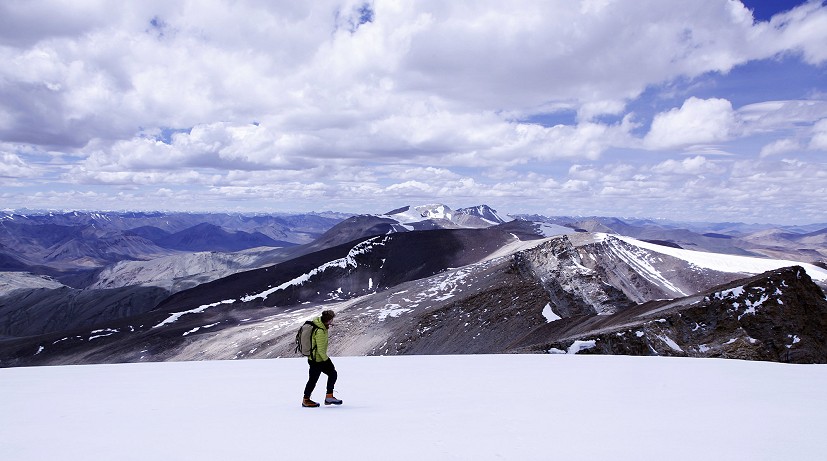
Firstly, it couldn't be so obvious. Making up the tale of a major first ascent would be far too easily uncovered in today's landscape of digital documentation. It's surely a progressive element of the digital age that any significant achievement in climbing (or any other adventurous endeavour) requires some form of proof for it to be widely believed. Today, a much more subtle kind of fabrication is possible, though, by someone skilled at curating a personal profile that's marketable and attractive.
The climbing writer and journalist Andrew Bisharat has written extensively of the new phenomenon of what he calls the 'athlete-model' in the climbing world. This could be broadly described as someone young and good looking who uses climbing as a vehicle for generating followers and sponsorship. Crucially, such an individual doesn't need to achieve anything particularly significant in their chosen sport in order to be successful at what they're doing. They simply need to be good at marketing themselves and curating an image that people find compelling. The 'athlete-model' effect is supercharged by social media. In fact, you could argue it could not exist without it. It is evident in many other adventure sports too - in surfing, for example, it is much more developed than it is in climbing, and it possibly has a greater effect on the culture of surfing as a whole.
What's the problem with all this, you might ask? People can follow whomever or whatever they want to follow, after all. But there is also risk in this process of blurring the distinction, out there in the ungoverned spaces of Facebook and adrift in the wilderness of Instagram, between genuinely significant achievements in the great outdoors and manufactured 'achievements' that are nothing more than highly curated, marketed images with accompanying 'stories' engineered purely to attract followers.
Unfortunately some (but not all) marketing managers of leading outdoor brands don't possess any real understanding of the activities their products are designed for. The problem here is that if you know a bit about climbing, it's very easy to tell the difference between a story about someone putting up a major new route and a branded post featuring an image of someone climbing something not very impressive but which nonetheless looks cool. Any good climbing photo can be spun into a story. But for young people coming into the sport, the distinction between these two very different things will not be so apparent. And this strange conundrum raises a whole series of questions that should be of interest to anyone concerned with the future of climbing both as a sport and as a way of life.
Climbing is currently experiencing the ongoing process of being 'discovered' by big brands, most of which don't know or care about climbing as such, but who see climbing as a very attractive way of acquiring more customers. Recent examples include Louis Vuitton 'chalkbags' and carabiners, Ralph Lauren attire sporting the words 'CLIMB' or 'ALPINE' and numerous car adverts using climbing visuals. This same commercial transition took place in other adventure sports with bigger demographic participation like surfing and skiing a while ago. It has yet to happen in ultra-niche activities like cave diving and bog snorkelling, and may yet take some time to do so. The power of social media in facilitating this ongoing 'commercial discovery' of climbing cannot be underestimated. Climbing has now moved away from its historic position as a niche pastime towards its future status as a far more mainstream activity, and social media - coupled, of course, with the rise of indoor climbing - has got a lot to do with this shift.
So if you're a professional dirtbag, a weekend warrior or something in between - and you're genuinely interested in real climbing - is it worth checking out of Facebook and Instagram for a while? Should you seek your climbing news and media elsewhere? As a longstanding sceptic of social media in all its forms, I can only advise you that doing so would be a wonderful, life-affirming experience. But at the same time, perhaps you'd miss something. Perhaps you wouldn't find out what Miss X or Mr Z had sent the other day. Well, that's probably true - you wouldn't be in the loop in quite the same way.
And I'd argue that would quite possibly be the biggest boost to your enjoyment of climbing - and also potentially to your performance - that you could gain. It may in fact be worth more than many hard training sessions, for one simple reason. The vast majority of the most successful climbers in history (as with most other successful people in different fields) have been highly intrinsically motivated people. I would go so far as to say that being intrinsically motivated is fundamental to being a strong climber (at least for those operating outside the competition arena). Social media prioritises and channels extrinsic motivation - the need for peer group recognition and response - over intrinsic motivation, the search for inner satisfaction and truth. Therefore the fundamental basis of social media is, in a very real sense, antithetical to the psychic space required, in my view, to be a successful climber. In the same way, I would suggest, social media itself is antithetical to the psychic space required to be a successful and fulfilled human being.
Strong climbers are leaders, not followers. They make up their own mind about what's cool and what's not cool. They don't need to be told what to look like, or what to do. They know about history, but don't give a shit about fashion. In contrast to the huge strength of character required to be another Lynn Hill or Alex Honnold, another Ines Papert or Adam Ondra, I would suggest that social media is an enormous obstacle to achievement, mainly for the young, whether in climbing or any other discipline. It is only recently that a proper public debate has begun to take place about just how corrosive social media is to the lives of young people - and to teenage girls, it seems, in particular. Whilst it has been recognised for some time that the largest quantity of online abuse is directed at teenage girls and young women (and illustrated here on UKClimbing.com by Natalie Berry's excellent article) the process of doing something about this huge problem is, finally, taking place - but only in the wake of far too many teenage suicides facilitated by social media use and abuse.
Whilst climbing can be a social activity, many of the most powerful climbing experiences are deeply personal. The senses climbing charges and the emotions it generates can be hard to articulate, let alone share with others. The best experiences in my own climbing life were so overwhelming that there's no way I could accurately describe them. I could explain what happened physically, but I couldn't really explain how those moments in time affected me, shaping my thoughts, my subconscious mind and my inner life in many extraordinary ways.
Climbing, or anything that involves exposure to real risk, leads us to encounter what the literary critic and philosopher of language George Steiner once described as "a truth more intense than knowledge." I'm personally convinced, by conversations I've had with successful people in different fields over many years, that the same sense of a deeply private space through which we find real inspiration is true for most individuals who have devoted a big part of their lives to something very difficult. To truly succeed, I believe that human beings must be able to find their own vision of themselves, in their own time, and by themselves. Everything, in other words, that social media is not. This process of self discovery in isolation, of course, is what the story of Christ in the wilderness is all about. Or as Mohammed Ali rather brilliantly put it: "the battle is won or lost far away from witnesses, out there on the road, long before I dance under those lights."
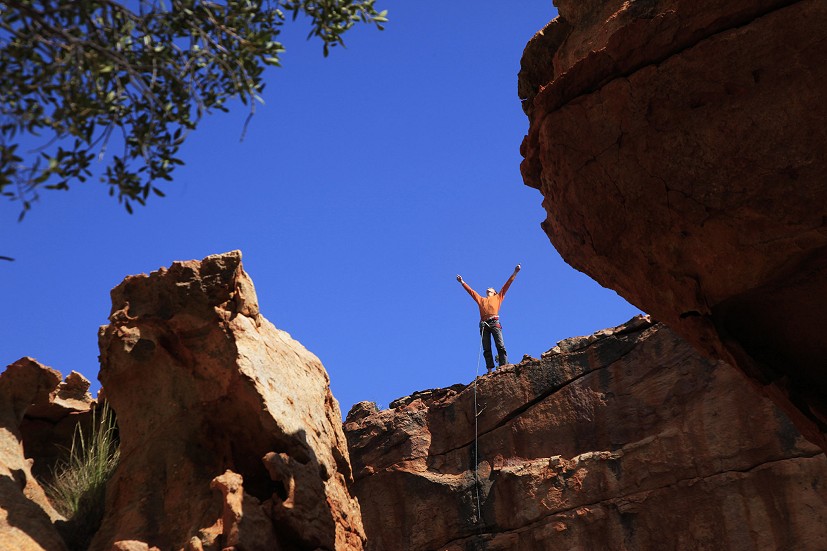
The Panopticon Jeremy Bentham imagined as a physical building over two centuries ago now exists worldwide, as a virtual techno-psychic structure, and is inhabited by more than two billion people. Fortunately for us in the West, we do have a choice about whether to live a dystopian life as prisoners inside this structure, or to live as free human beings outside it. Unlike the subjects of China's social credit surveillance apparatus, who cannot escape from that system, we have a vital choice to make about whether the use of social media enhances our lives or does the opposite. And we can then take direct action, as I and many others have done, based on our conclusion to that question.
The Panopticon of social media oppresses free thought and free speech by cultivating echo chambers, it channels hatred and violent ideology, it acts as a conduit of abuse whilst protecting anonymous abusers from justice, it promotes dangerous models of human perfection, it encourages narcissism and virtue-signalling whilst suppressing self-reflection, it dismantles traditional models of learning by the young from the old, it undermines democracy through the viral spread of false information, and - perhaps worst of all - it takes up your precious time on Earth when you could be doing something much, much better.
Something, for instance, like climbing.
***
David Pickford is a writer, photographer, and editor. He has been climbing for twenty-five years and has climbed in more than fifty countries worldwide. He is currently the editor of Base magazine, a new, free quarterly adventure sports publication.

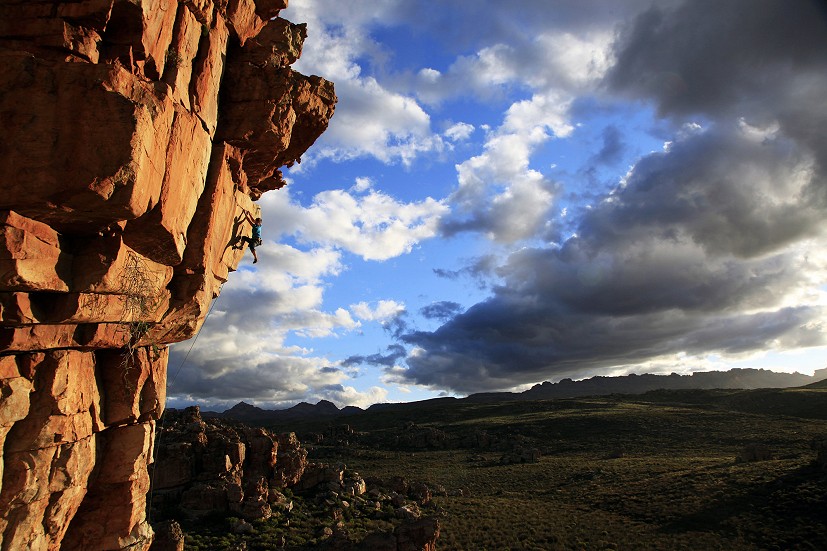
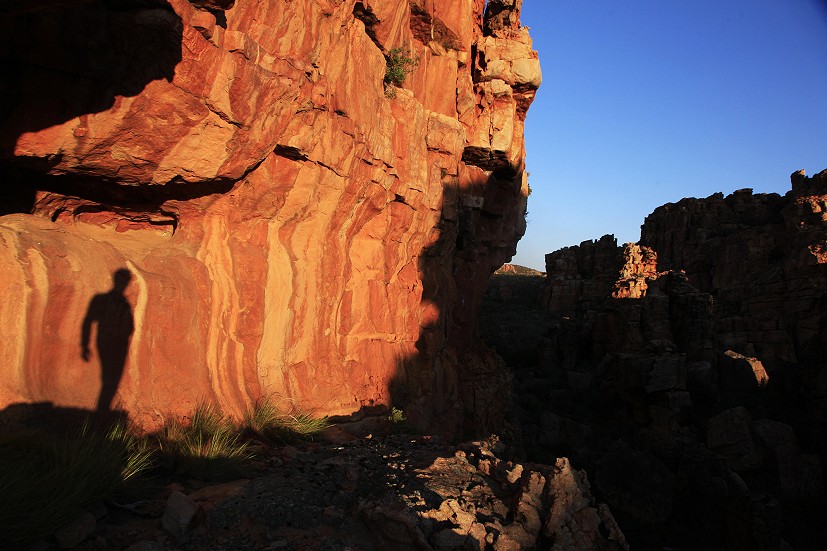
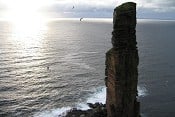


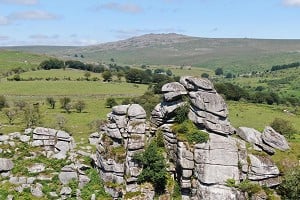
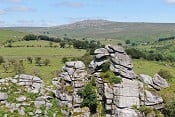






Comments
Great article Dave.
It does beg the question over whether intrinsic motivation actually exists. I thought the Free Solo movie was really interesting in terms of AH's family background and parental expectations - which one could argue provide strong extrinsic motivation for his achievements.
I'd like to think intrinsic motivation does exist. It appears to, in the few sponsored climbers I know. They are certainly not motivated by Facebook likes or Instagram followership, but like all of us they have to pay the bills.
Social validation is an integral part of being human and I do ponder on the rather cliched question as to whether any of us would actually go climbing if no-one - even close friends - ever knew.
I'm not sure about this. I'm not saying Facebook are saints with anything resembling a social conscience, but I don't think they can be entirely blamed for the way people (individuals who have the ability to exercise free will) behave. Social media is just a faster, more powerful version of what has always happened. You say climbers don't follow fashion, but I'm pretty sure as those lurid leggings in the 80s count as some kind of fashion following. Climbers have always been a self-identifying tribe with our own signals and trends. We've always trumpeted the hardest climbs, the latest styles, the new cool locations. Nothing has changed, it's just more instant and more obvious.
First image in this article is from 1939 to contrast with Dave's first picture https://www.independent.co.uk/voices/comment/when-taking-the-train-was-a-sign-of-prosperity-8439710.html
I've done lots of climbing that no-one else knows about. Soloing, scrambling, bouldering, clambering over bits of rock when I'm alone....
Plus ca change.